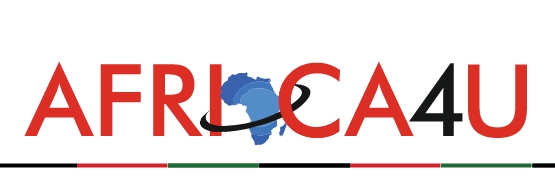While global remittances, according to the World Bank, are projected to decline by 20% in 2020 from a record level of US$ 550 billion in 2019, its impact will be felt in Africa more severely. In relatively industrialized countries like Nigeria, Ghana, Kenya etc. remittances contribute significantly to the foreign exchange inflows. For instance, Nigeria received a remittance of US$ 23.8 billion in 2019. Some of the very poorer economies like DR Congo, Senegal, and Zimbabwe received significantly higher inflows through remittances. Zimbabwe, the most economically backward country in the region received US$ 1.7 billion in2019, which helped the country to tie down its continuing deep foreign exchange crisis.
There is a third set of countries, which account for lesser inflow of remittances, but such negligent flows constitute a sizable of their GDP. The examples include South Sudan, Lesotho, the Gambia, and Zimbabwe. Remittances as a percentage of GDP is perhaps the highest for South Sudan in the world at 34.4%
Does the World Bank remittance data reflect the reality? The decline in remittances has taken into account largely fall in the wages and employment of African migrant workers overseas. It is not clear how long the pandemic would continue. If the pandemic continues, it is quite possible that the decline in remittances will be much higher than projected.
The World Bank projections clearly hide the macro picture of the remittances. For the sake of analytics, it divides Africa into two regions viz North Africa and Sub-Saharan Africa. The former-North Africa-is clubbed with the Middle East. Therefore, be in the case of DI flows or remittance, a pan African approach in analytics is missing. Is it the time to revisit the classification and evolve a continental –wide approach for collation of data and its analytics, articularly against the backdrop of the emerging African common market?
Another fault line is that the data does not take into account the remittances of the Africans, who move within the continent in search of jobs. Their remittances are substantial though there is no mechanism to gauge the quantum, leaving everything to guesses and approximations. There are many people from Sub-Saharan Africa working in countries like South Africa, Ghana etc. They remit through banking or other sources regularly to their home countries. According to Pew Research, over 25 million sub-Saharan migrants were living outside their home countries in 2017 working in other African countries. However, the available data on migration and remittance flows does not take into account their contributions.
A close look at the World Bank estimates of decline in remittances reveal that North Africa, which is relatively prosperous and consist of countries including Algeria, Egypt, Libya, Morocco, Sudan, Tunisia and Western Sahara, remittances are projected to fall by 19.6 percent to US$47 billion in 2020 (including Middle East). Covid-19 and weak oil prices could be the reasons for the fall in remittances. The World Bank forecasts that the remittances are expected to pick up in 2021 at a slower pace of 1.6%. But again, many feel that it would be an optimistic forecast since the end of the tunnel may prove to be longer.
Remittances to Sub-Saharan Africa, consisting of 46 countries in the continent registered a small decline of 0.5 percent to US$48 billion in 2019. Remittance flows to the region are expected to decline by 23.1 percent to reach US$37 billion in 2020, while a recovery of 4 percent is expected in 2021.
While these are extraneous factors caused by Covid -19 and other issues like oil price decline etc, there are certain things the countries in the continent could set right. For instance, the cost of sending remittances is much higher in the continent than in any other place in the world. In some corridors like Southern Africa, the cost of sending a US$ 200 from abroad is as high as 20 percent. The least the African countries can do is to ensure a uniform rate of 3% or so for remittances, which can prevent a lot of money entering the country through clandestine channels, causing great strains to the national economies. There should be efforts to induce competition in the domestic remittance market by bringing private sector, particularly the mobile payment companies to transfer funds from abroad. African development Bank should take an active interest in fostering a strong digital infrastructure to induct competition and efficiency.





